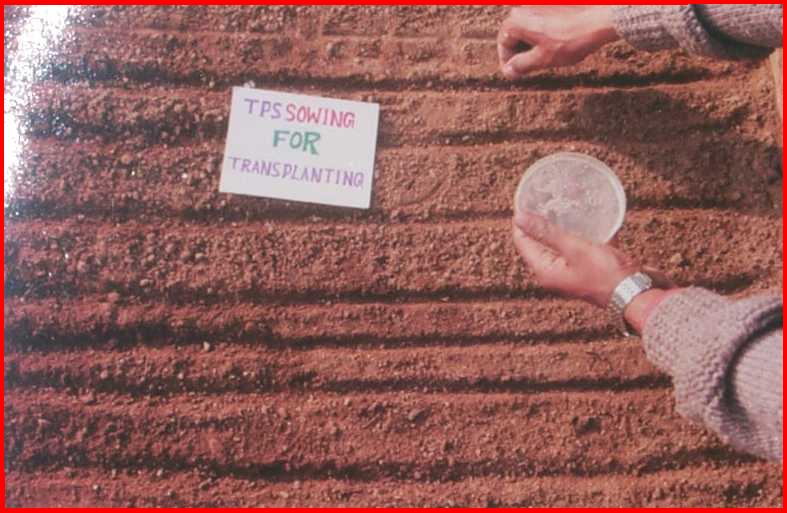

Seedling transplanting is suitable in areas where production of healthy tuber seed and its storage is costly/difficult, temperatures are mild (between 15-25°C ± 5°C) for more than 120 days during the crop season and irrigation facilities are easily available.
Half of nitrogen and full doses of P and K are applied at the time of field preparation. Half ridges and furrows are prepared and light irrigation is given in furrows. After 3 to 4 days of irrigating the fields, bare rooted seedlings are transplanted at 60 x 10 cm on north side of the ridges if temperatures are high or in middle half of the ridges if temperatures are normal. Irrigation is applied in furrows soon after transplanting the seedlings. Subsequently, irrigations are given as and when required. 10-12 days after transplanting, when seedlings are fully established, inter culture is done in such a way that the transplanted seedling comes in the center of the newly formed ridge. The remaining half dose of nitrogen is given in two split doses. One at the time of first earthing and second at final earthing up. Prophylactic sprays of insecticides are given and haulms removed 90 days after transplanting. Experimental average yields as high as 270 q/ha in the transplanted crop may be obtained at 90 days after transplanting producing 70-80 % marketable tubers (> 20 g). These seedling tubers can be used either as ware potato and/or seed for the next crop season.
In hilly areas of North Eastern
states, seedlings should be transplanted at the onset of pre-monsoon. Fertilizer
is applied @ 40 kg N, 100 kg P2O5 and 60 kg K2O/ha
in furrows made 40 cm apart and FYM @ 15 tonnes/ha is also applied in furrows
above the fertilizer and covered with soil. Seedlings (10-12 cm tall) are
transplanted 10 cm apart in furrows. Soon after the transplanting water is
applied with sprinkler. The damaged seedlings must be replaced within a week.
First earthing may be done at 25 days after transplanting applying 30 kg N/ha in
the same operation. Second earthing up may be done when plants are 20-25 cm tall
and remaining nitrogen is also applied at the same time. Pesticides are sprayed
at proper interval to save the crop from late blight and crop harvested at
maturity.